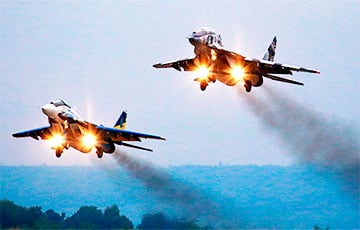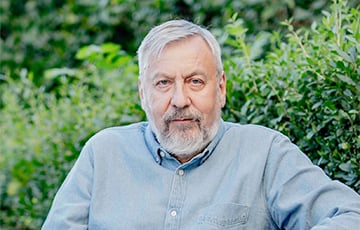The Economist: Ukraine Uses New Tech To Defend Its Airspace
1- 25.07.2024, 11:49
- 9,876

And it has proved to be very good.
Once Russia’s full invasion got rolling on February 24th 2022, Ukraine’s prospects for defending its airspace looked poor. The country’s radar coverage was patchy even before its radar stations came under attack, and many incoming drones and cruise missiles were flying too low to be spotted by stations still standing. But the situation changed.
According The Economist, four days after the invasion began, a group of ambitious Ukrainian techies formed an outfit called Technari to develop an alternative system, known as eppo, for detecting and tracking Russian aerial attacks. Consisting of a smartphone app and an artificial-intelligence (ai) model, it allows verified Ukrainian citizens to report flying objects they see or hear with the push of a button.
It has proved stunningly effective. And Technari is hopeful of yet greater successes as it starts to process sounds of potential aerial threats picked up by microphone networks positioned across Ukraine.
“The company’s work is a small part of a quiet but dramatic Ukrainian experiment in countering aerial attacks. Several other outfits are already operating networks of microphones that relay sounds to Ukrainian air-defence operators. These wartime innovations are proving to be so successful that other countries may soon follow suit,” the publication notes.
Microphone arrays that triangulate a shooter’s position have a long history in warfare, and they made much progress in the past two decades, especially in protecting Western soldiers in Afghanistan and Iraq. But the analysis of sound waves for air defence has long been considered impractical. Mary “Missy” Cummings, a former American fighter pilot who has co-written numerous academic studies on the technology’s prospects, has compared the quest to “reading somebody’s palm”.
Many have wanted to believe the approach would work, she says, but so far it has not.
Ukraine’s experience has changed matters, reckons James Hecker, who commands America’s air forces in Europe from Ramstein air base in Germany. He describes Ukrainian innovation in acoustic sensing as “extraordinary”.
Compared with radar, Ukraine’s microphone networks are cheaper and emit no signals that Russian forces might detect. And whereas clever engineering can sharply reduce an aircraft’s radar signature (as Russia has shown by redesigning Iran’s Shahed kamikaze drones with stealthier composites), propelling hardware through the air generates sound. Crucially, acoustic detection works best at the low altitudes where most combat drones fly. General Hecker reckons the tech is now viable up to about 3,000 metres, with radar able to monitor higher altitudes without interference from clutter near the ground.
Zvook phenomenon
All this explains why microphone networks are so appealing. One such was designed by Zvook (“sound” in Ukrainian), a startup in Lviv that has placed high-quality microphones near the front. The resulting recordings were used to train software to identify the acoustic signatures of threats ranging from small drones to rockets, missiles and crewed aircraft—all while disregarding the sounds of civilian life.
Zvook’s detection ranges, though much shorter than radar, are nothing to sniff at. Drones, for example, can be detected up to 5km away. For cruise missiles, the range is about 7km. To pull this off, Zvook designed curved “acoustic mirrors” half a metre in diameter. These dishes concentrate sound waves on the microphones they cup. Most listening stations have two, for a coverage arc of about 200°. Processing takes place on an adjacent computer.
Zvook listening stations, each smaller than a shoebox, are produced for about $500 each. By comparison, a radar able to detect a smallish drone 5km away can cost $500,000. A microphone network can therefore be relatively dense, and accuracy increases along with the number of stations that hear a sound. Kyivstar, a telecoms firm, installs Zvook’s kit on its cell towers, handles maintenance and transmits data all free of charge. In areas without functioning cell towers, such as near the front, the system is often hidden in grass without the bulky acoustic mirrors, which might be spotted. Power is provided thanks to a battery or solar panel.
Zvook’s detections typically take less than 12 seconds to show up in an army computer program called Delta. Maryan Sulym, an air-defence sergeant and Zvook’s boss, says the rate of false positives is now about 1.6%. To provide additional verification, Delta users receive a nine-second clip of the sound in question. In areas where Zvook’s roughly 270 (and counting) stations, all donated to the army, are listening, radar is often switched on only in response to alerts, he says. Zvook’s hand in foiling airstrikes, most notably on Kharkiv, Ukraine’s second city, earned Sergeant Sulym permission to focus his efforts on a big expansion of the network.
Its accuracy should increase, too. To triangulate a sound’s origin more efficiently, Zvook is designing a special array of four microphones to plug in to listening stations. That should allow the direction of a sound’s origin to be located to within about 5°. Sergeant Sulym hopes that this will be good enough for interceptors to be launched without the need for a prior sweep from ground radar. Military personnel are due to test an initial batch of 15 of these triangulation arrays next month.
Sky Fortress
A far bigger acoustic-detection network has been developed by a secretive Ukrainian outfit called Sky Fortress. It consists of several thousand listening stations, with thousands more planned. Though its initial listening stations captured and processed sound with Android smartphones, the network, like Zvook’s, now uses dedicated microphones and microcomputers. Data are fed into a Ukrainian command-and-control system known as Virazh. Like eppo and Zvook, Sky Fortress is mostly funded by donations, an astonishing development for air defence.
Few outside experts are privy to Sky Fortress’s workings. One of them is Riki Ellison, founder of the Missile Defence Advocacy Alliance (mdaa), a non-profit in Alexandria, Virginia. Sky Fortress has become so extensive and “so damn good”, he says, it now detects most Russian munitions that fly low into Ukraine. Russian units have begun to muffle or otherwise alter their drones’ acoustic signatures, but the detection algorithms promptly adapt.
Frequency spectrograms shared by a Ukrainian colonel, who requested anonymity, show that even similar drones have distinct sound signatures.
Russian Malik
Russia is responding in kind. Tallamkho Design Bureau, a firm in Grozny in Chechnya, recently announced that its new microphone system, Malik, can protect Russian trenches and other positions by detecting Ukrainian drones from about 330 metres out. A smaller Malik system attaches to a soldier’s uniform.
Several weeks ago Sky Fortress’s kit was quietly demonstrated on a test range in Europe. Representatives from 11 nato countries saw (unarmed) cruise missiles and drones handily detected and tracked. Mr Ellison of mdaa, the organiser, says two more such events are planned. nato is considering deploying microphones for its air defences, says General Hecker. Several defence ministries in the military alliance’s east are already purchasing acoustic gear for air defence.
Some enterprising Ukrainian technologists are rigging dog-fighting drones with microphones to help them zero in on their Russian opposite numbers in aerial combat.











